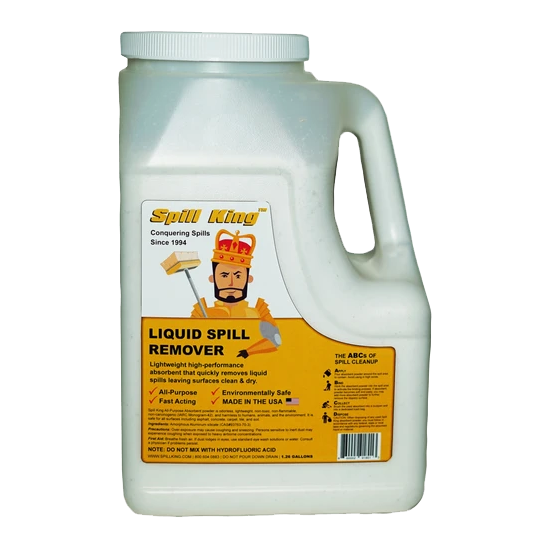
Common Slip and Fall Accidents in Grocery Stores & Convenience Stores
Fall hazards for workers and customers are more common than you might think, and many factors can cause them.
Introduction
People come into grocery and convenience stores to purchase home supplies for themselves and their families. It’s a place that has items that are needed daily. It goes without saying, but a grocery store is a prominent place. With all of those aisles, it can be easy to slip and fall. There are a few steps stores can take to avoid these accidents, but there are many other things you need to know about slips and falls in grocery stores. In this article, we’re going to take a look at the most common causes of slips and falls in grocery stores and convenience stores, as well as how you can avoid these situations.
8 Common Causes of Slip and Fall Accidents in Stores
Slip and fall accidents are common in grocery stores, convenience stores, and other retail establishments. Store employees are responsible for cleaning up spills and keeping their store’s floors safe. One of the most common slip and fall accidents in grocery stores occurs when a customer slips on the condensation or water left by a leaking refrigerator. Here are the most common slip and fall accidents in both types of stores.
1. Sticky floors
People tend to spill things on grocery store floors, whether food, oil, or other liquid merchandise on grocery store floors. The liquids remain pooled on the floor; therefore, they become sticky and slick when shoppers walk on them with their shoes or cartwheels. When wet spills are left to dry out naturally, the liquids caramelize into a sugary goo that gets harder and stickier as it dries.
2. Shopper congestion and wet floor
– Shopper congestion occurs when too many customers enter a store simultaneously, causing shoppers to walk slowly or even stop in the middle of an aisle, blocking other customers from coming through. When this happens, it’s easy for someone slipping on a wet floor to fall into another customer.
3. Slips on wet floors caused by leaking pipes or broken sprinkler systems
One of the top causes of slip and fall accidents is wet floors. Each year, thousands of people sustain injuries related to slipping on wet floors inside grocery stores. The most common reason for wet floors in grocery stores is spilled liquids. As consumers load their carts with groceries, they often spill liquids onto the floor where they walk. One gallon of milk can create up to three gallons of mess if it spills onto the floor.
4. Spilled Soda and Soda Machines
To quote a South Carolina woman, “I don’t know how it happened. We were just walking through the store, looking for a few items. And then we just fell to the floor.” Luckily, she and her three children were unhurt except for being shaken up. She adds that no one seemed to notice what happened until someone called the police after seeing their fall on a security monitor. In this case, she wasn’t hurt because a soda display rack broke her fall.
She fell while her children were following her. It was hot outside, so she had stepped close to the soda machine to get some cold drinks for herself and them. She didn’t notice that someone had spilled some soda on the floor while taking a drink. When she stepped into this puddle with one foot, she lost her balance and fell with both feet into the pool of soda. She hit the display rack, which broke her fall.
5. Oily Surfaces
In grocery stores, the floor and shelving can have a lot of grease underneath them. It’s common for people to slip on the floor after walking across the greasy surface. In addition, some grocery store floors have oil stains from cars or trucks left parked outside overnight. Spilled oil creates a greasy spot that makes it harder for people to walk without slipping and falling.
6. Worn Out Floors and Walkways
In both types of stores, the floors and walkways can become worn down. Convenience stores are especially prone to this, as people constantly walk around while buying products there. The constant traffic wears down the floor and eventually makes it hard to walk without tripping and falling. In addition, some store owners don’t clean up spilled liquids and foods from the floors, which could lead to a slippery surface when it gets wet from washing feet, spillage from carts, or other accidents.
7. Inadequate lighting
The lighting is often inadequate in some stores, especially near the shelves and displays. In addition, some store owners don’t have adequate lighting at their entryways and exits for security reasons. Since grocery stores have a lot of merchandise on display, they can’t afford to lose a great deal of light from their wide aisles. As a result, dark spots are common in these businesses. Some employees turn off the lights to deter shoplifters, while others simply choose not to replace burnt-out light bulbs.
8. Obstructed View
In grocery stores, it’s common for merchandise displays to block the path of shoppers. These displays are arranged in a way that makes it hard for people to see where they’re walking, especially around corners or in narrower aisles. The above is especially true when high shelves or product displays make it hard for people to see the floor. People often trip over these obstacles, which causes injuries.
Why are slip and fall accidents in grocery stores so common?
Slip and fall accidents can be severe, even for minor falls. The impact of a fall on the human body is not to be taken lightly. As such, it’s essential to know why grocery store slip and fall accidents occur and how store owners can prevent them.
The root cause of most grocery store slip and fall accidents is a lack of maintenance. Grocery stores are busy places with a lot going on, and it can be easy for them to let cleaning and upkeep slide. This problem is compounded if the store is understaffed, as more work will need to be done by fewer employees. When this happens, it’s easy for things like spills to go unaddressed for some time after they happen.
These spills can be hazardous for customers with mobility issues or motor skill problems such as reduced coordination or motor control as their inability to react as quickly as others can result in them slipping and falling on spilled items such as water or other liquids in the aisle ways or near the entrances/exits.
There are several other live reasons why people slip and fall in grocery stores. The most common include:
- Mud or ice on parking lots may be caused by melting snow or rainwater that hasn’t been cleaned up yet.
- Grocery carts are often oiled to make them move more efficiently, making them slippery if they’re left out overnight.
- Oil stains on floors may be from leaking coolers or fryers.
- Crumbs on floors can be from food products or spilled bread products.
- Obstacles in parking lots, such as potholes or cracks, are likely to cause someone to slip when they get out of their car, especially if it has been raining recently.
Store owners: Steps you can take to avoid slip and fall accidents in your grocery convenience stores
If you own a convenience or grocery store, you are probably aware of the potential dangers that exist within your business. You may have employees working behind the register or stocking goods at the back of the store. You may even have customers who are walking around with hot coffee in their hands.
Safety is essential for any business owner, but it is even more so in retail store settings. Each year, there are millions of slip-related injuries in the United States, and millions of dollars are paid out in claims due to slip-and-fall accidents.
You can take the following steps to keep your store as safe as possible for your customers and employees:
Keep grocery store floors clean and dry quickly by using SPILLKING—–Spill King is the powder that pours on liquid spills that absorb liquids into their super absorbent polymer. Spill King saves you time and provides an environmentally friendly way for you to clean up large volumes of liquid spills quickly, cleanly, and effortlessly. Spill King absorbs liquids up to 100 times its own weight.
Here are some other tips for avoiding slip and fall injuries in grocery stores:
1. Make sure the floor is clean.
Wash down floors before the store opens every day to prevent the build-up of dirt and grime. Oil squeaky hinges on storage doors—repair damaged flooring.
In a grocery store, it’s the owner’s responsibility to keep the floors clean. You can help in a small way by picking up any spilled foods or liquids in the aisles, so they don’t stay on the floor. But owners have to be more aware of what’s happening in their stores and pick up spills before they get sticky and harden into sugary slime that can cause someone to slip and fall.
2. Don’t Block the Aisles.
Shoppers should be able to see more than two feet ahead of them while walking around obstacles on their way down the aisle. If the merchandise displays are so high that they hide what’s on the floor, shoppers can trip over an unexpected obstacle without realizing it.
3. Don’t Walk Too Close to Shelves.
In a grocery store, keep a safe distance from the display racks. In addition, stay at least 3′ away from any shelving. Shelving can have openings covered with food or lost products that can fall out and cause a fall if someone steps on them.
4. Look at the Entrance and Exit Areas and Light Them Well
If you’re in a grocery store and the lights are dim, use a flashlight to help light up dark areas near you. Also, inspect the entire store before purchasing anything so you can see if there are any obstacles in your path when walking to or from an aisle.
If you’re hurt in a grocery store accident, contact one of our injury lawyers to discuss your case. You may be able to collect compensation for your pain and suffering, medical bills, and lost wages.
5. Place signs in slippery areas, such as the floors and the aisles. Signs should say “slippery when wet.” Posting signs is not enough; they must be located close to the areas that would become slippery.
6. Make sure that employees working at the convenience store are adequately trained in cleaning and maintaining spills. They should know what type of cleaning products to use for different types of spills.
7. Improper storage of merchandise can cause a slip and fall accident. Store owners should make sure that their employees place merchandise on a stable surface, such as a shelf or a table.
8. Lock up items that are not being used, such as mops, brooms, buckets, and rags, near your establishment’s entrance area so that they do not pose a threat to anyone who enters your store.
Conclusion
Grocers are therefore wise to take reasonable steps to protect their customers from falling accidents. In other words, grocery stores should prioritize safety by making sure drink counters, all accident-prone areas are marked, spills are promptly cleaned up, and the floors are kept in good repair.

